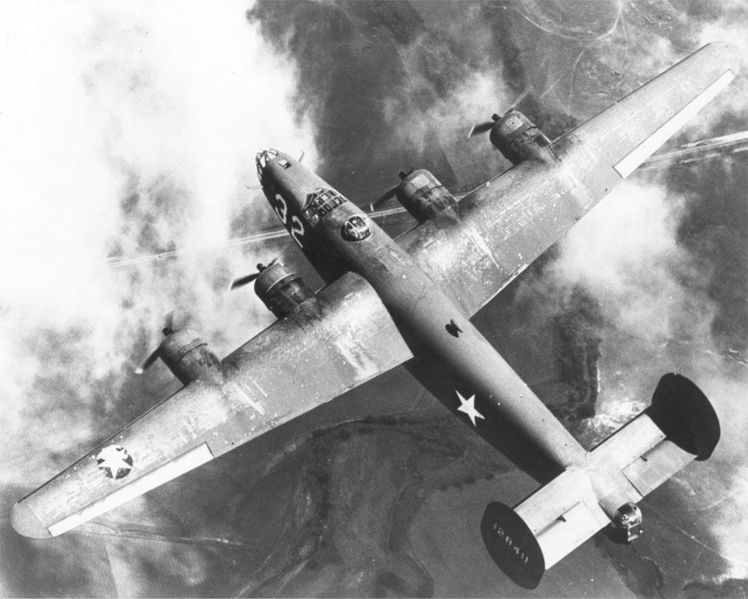By: Brenden Boudreau
If you look hard enough, it’s amazing what you can find.
I have long been interested in the fate of my Great-Uncle J.R. Craddock, 2nd Lieutenant and co-pilot of a B-24 that went missing somewhere in the Pacific Ocean in early March 1944.
I’ve heard bits and pieces over the years about what was believed to have happened to him and the rest of the crew on his B-24.
From what I could gather, it was always assumed he was a part of one of those massive bombing missions you see clips of in World War II documentaries. Just one bomber of a massive formation set out to bomb some distant Pacific island.
Just recently, I was inspired by a news article about the discovery of a lost B-24 crew just off the coast of a Pacific island that brought closure to the families of the long-lost crew.
I began fervently searching the internet to find any information that could reveal the fate of John Robert Craddock.
To my surprise, the adage that you “can find anything on the internet” proved true.
I found a picture of my Great-Uncle’s name on a monument in the Philippines called the “Tablets of the Missing.”
It was located on the website FindAGrave.com, which included details about the bomber my uncle was co-pilot for, as well as the whole crew of the bomber and the unit to which he belonged.
Of great interest, it had a serial number for the SB-24D (though it turned out to be the wrong serial number, off by two digits). What caught my interest the most, though, beside the serial number, was the “S” on the front of the “B-24D” designation.
Being a student of World War II history, I had assumed my uncle was a co-pilot of one of the later-model B-24Js, not a B-24D, since he went missing later in the war.
After a little more digging, I came to find out that the unit he belonged to, the 868th Bomber Squadron of the 13th Air Force, was a specialized unit trained in low-level bombing of Japanese ships. The “S” stood for “Search.” The unit was called the “Snoopers.”
I have since purchased a book that details the forgotten history of this specialized squadron.
These D-model B-24s were retrofitted with advanced electronics and radar that allowed them to do nighttime harassing raids of Japanese ships.
According to some of the history I have read – of which I’ve barely scratched the surface – the Japanese drastically reduced or even stopped sending ships to the Solomon Islands due to the effectiveness of these raids.
Sometimes only a pair of SB-24s would go out under the cover darkness on these types of missions.
Sometimes, a single bomber would be sent out.
Come to find out, the latter is exactly what my Great-Uncle J.R.’s bomber was doing on March 10, 1944 when he and the rest of the crew went missing somewhere between his take-off point of Munda in the Solomon Islands and the target area of Rabaul, Papua New Guinea.
These details, and so many more, came to light after taking a shot in the dark with a free seven-day trial on the Ancestry.com project website Fold3.com.
I’ll be honest, I really wasn’t expecting to find anything on this website. So many other sources turned out to be dead-ends after seeming to offer so much hope.
But within my first half hour of searching this website, I came across a microfilm image of an official government document called a Missing Air Crew Report that provides a treasure-trove of details regarding the mission he was on, the crew he was with, as well as the search efforts by the Army Air Force and Navy.
It’s a weird feeling to discover so much about a relative you’ve never met and to feel so connected to them, even after they were pronounced dead nearly 80 years ago.
No longer in mind is my Great-Uncle J.R. Craddock a relative who died in some distant war. I now know what he was doing and where he was doing it.
He isn’t lost to history.
There are so many more things I’d like to learn about him. How I would have loved to come across these details before my Grandma (J.R.’s sister) and Grandpa died, as my mother believes it would have brought closure for them. J.R.’s death, as is true in all wars and circumstances, was absolutely devastating to the family.
What only added to the grief was never really knowing his fate. He and his crew went missing on March 10, 1944. He was declared dead by the Army on January 24, 1946.
Even with the details I have unearthed, I still don’t know his fate, except that he and his fellow men went out on a mission the night of March 10 and never came back.
Perhaps one day the remains of his bomber will be discovered on the floor of the Pacific Ocean, or buried in some deep jungle on an uncharted island.
More than likely not, though, as time continues to erode the remnants of the past.
Lord willing, I will meet Great-Uncle J.R. on the other side of this life, and I will get to ask him what happened on that fateful day.
Until then, I will continue my search in the hope of unveiling more of a man I have never met, but have felt so connected to for most of my life.
Brenden Boudreau is the Director of Field Operations for the National Association for Gun Rights, writing from Michigan. Contact him at [email protected]. Disclosure: In addition to his work with the National Association for Gun Rights, the author is also Executive Director of Great Lakes Gun Rights.


